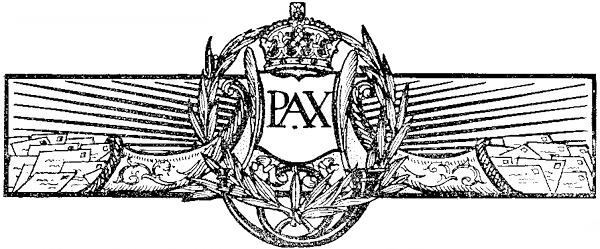Roman Provincias > Provincia Mesopotamia
Provincia Mesopotamia

Background
Provincia Mesopotamia was a Roman province established in the 2nd century CE, encompassing the region located between the Euphrates and Tigris rivers, which roughly corresponds to modern-day Iraq and parts of eastern Syria and southeastern Turkey. Here's an overview of the province:
Conquest and Formation:
Mesopotamia came under Roman control during the campaigns of Trajan in the early 2nd century CE. After defeating the Parthian Empire, Trajan annexed the region and established it as a Roman province. The conquest of Mesopotamia was part of Trajan's ambitious military campaigns to expand the Roman Empire eastward and secure the eastern frontier against the Parthians and other rival powers.
Geography:
Mesopotamia, meaning "land between the rivers," is a historical region located in the Middle East, between the Euphrates and Tigris rivers. It is known for its fertile plains, which supported agriculture and civilization in ancient times. The province of Mesopotamia was strategically situated at the crossroads of trade routes connecting the Mediterranean world with Persia, India, and Central Asia.
Urban Centers and Infrastructure:
The provincial capital of Mesopotamia was Seleucia-Ctesiphon, a major city located on the eastern bank of the Tigris River. Seleucia-Ctesiphon served as a political, administrative, and cultural center, boasting impressive architectural monuments, palaces, and temples. Other significant cities in the province included Edessa (modern-day Şanlıurfa in Turkey), Nisibis (modern-day Nusaybin in Turkey), and Singara (modern-day Sinjar in Iraq). These cities were connected by a network of roads, bridges, and canals constructed by the Romans to facilitate transportation and trade.
Economy and Resources:
Mesopotamia was an agriculturally rich region, known for its fertile soil and abundant water supply from the Euphrates and Tigris rivers. The province produced a variety of crops, including grains, fruits, vegetables, and cotton, which were cultivated in the irrigated fields. Trade and commerce flourished in Mesopotamia, with the province serving as a vital hub for the exchange of goods between the Roman Empire, Persia, and the East. Silk, spices, precious metals, and luxury goods were among the commodities traded in the region.
Culture and Society:
The population of Mesopotamia was ethnically diverse, consisting of Roman settlers, indigenous Mesopotamians, Greeks, Persians, Jews, and other ethnic groups. Greek and Aramaic were the administrative languages of the province, although other languages such as Latin and Persian may have also been spoken.Mesopotamia was home to a rich cultural heritage, with influences from various civilizations, including the Sumerians, Babylonians, Assyrians, Greeks, and Persians. Religious beliefs and practices were diverse, with temples dedicated to various deities and cults coexisting in the region.
Legacy and Decline:
Mesopotamia remained under Roman rule for several centuries, contributing soldiers, administrators, and resources to the Roman Empire. However, the region faced internal instability, external threats from neighboring powers, and economic decline. In the 3rd century CE, Mesopotamia came under increasing pressure from the Sassanian Empire, which succeeded the Parthians as the dominant power in the region. The province eventually fell to the Sassanians in the mid-3rd century CE, marking the end of Roman control in Mesopotamia. Despite its eventual decline, the legacy of Roman Mesopotamia endures in its archaeological sites, monuments, and cultural heritage, which provide valuable insights into the history of the region and its interactions with the broader Roman Empire and ancient civilizations of the Near East.
Roman Provincias
Roman Provincias List
- Provincia Achaea
- Provincia Aegypti
- Provincia Africa Proconsularis
- Provincia Cottiae
- Provincia Maritimae
- Provincia Alpes Poeninae
- Provincia Arabia Petraea
- Provincia Armenia
- Provincia Asia
- Provincia Assyria
- Provincia Augustamnica
- Provincia Bithynia et Pontus
- Provincia Britannia Inferior
- Provincia Britannia Superior
- Provincia Britannia
- Provincia Byzacena
- Provincia Cappadocia
- Provincia Cilicia
- Provincia Corsica et Sardinia
- Provincia Crete et Cyrenaica
- Provincia Cyprus
- Provincia Dacia Aureliana
- Provincia Dacia
- Provincia Dalmatia
- Provincia Galatia
- Provincia Gallia Aquitania
- Provincia Gallia Belgica
- Provincia Gallia Lugdunensis
- Provincia Gallia Narbonensis
- Provincia Germania
- Provincia Germania Inferior
- Provincia Germania Superior
- Provincia Hispania
- Provincia Hispania Baetica
- Provincia Hispania Citerior
- Provincia Hispania Lusitania
- Provincia Hispania Tarraconensis
- Provincia Hispania Ulterior
- Provincia Iudaea
- Provincia Lycia et Pamphylia
- Provincia Macedoniae
- Provincia Mauretania
- Provincia Mauretania Caesariensis
- Provincia Mauretania Tingitana
- Provincia Mesopotamia
- Provincia Moesia
- Provincia Moesia Inferior
- Provincia Moesia Superior
- Provincia Pannonia
- Provincia Pannonia Inferior
- Provincia Pannonia Superior
- Provincia Pannonia Valeria
- Provincia Raetia
- Provincia Sicilia
- Provincia Sophene
- Provincia Syria
- Provincia Syria Palaestina
- Provincia Syria Phoenice
- Provincia Thracia